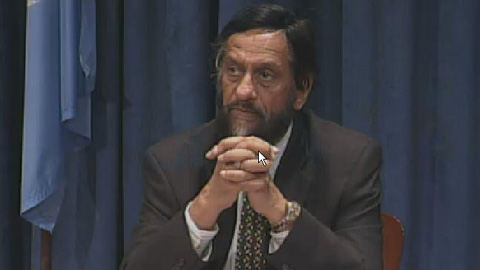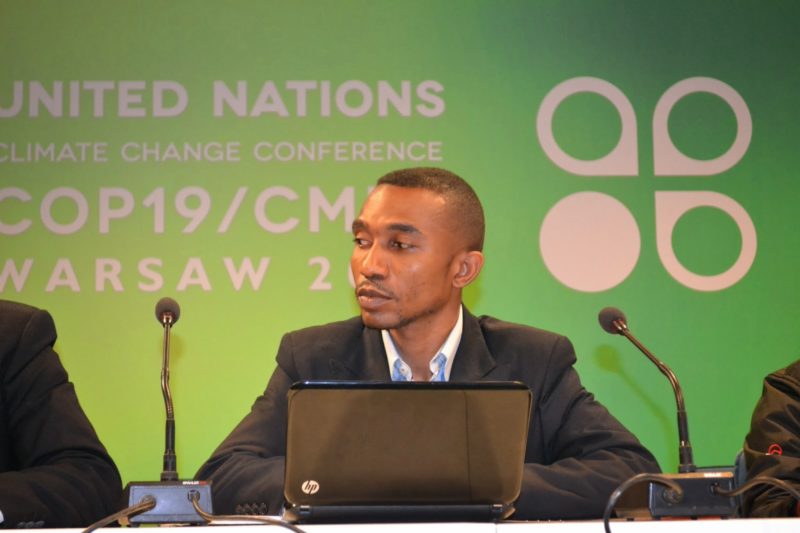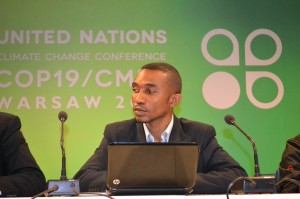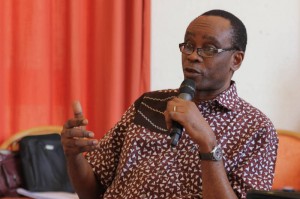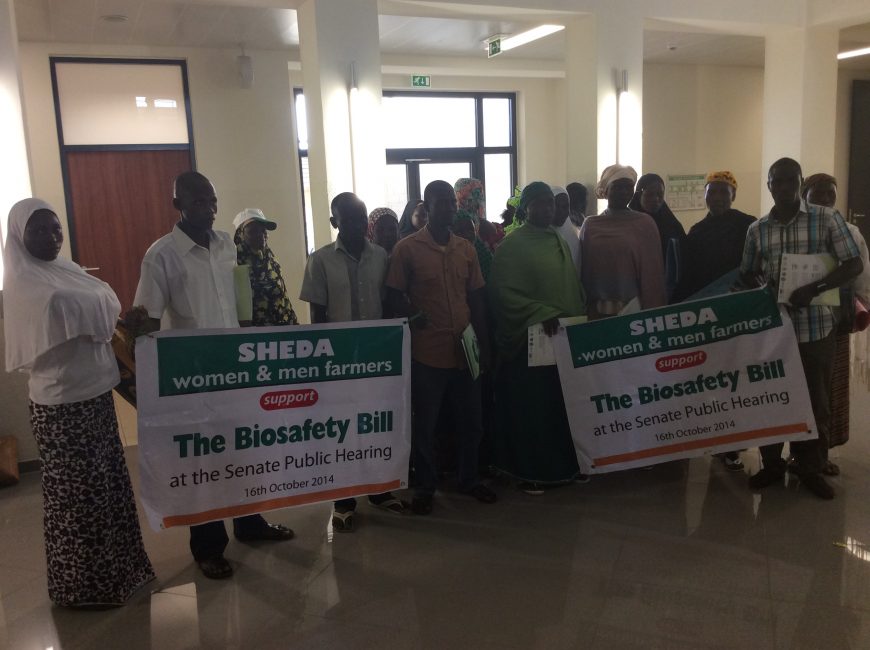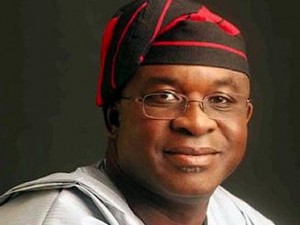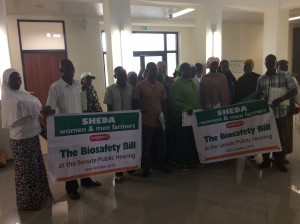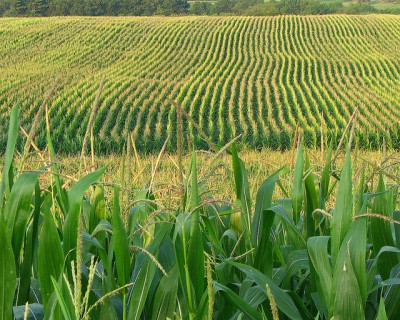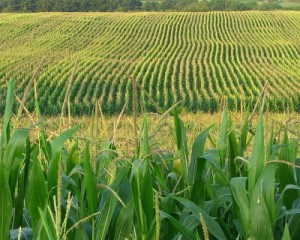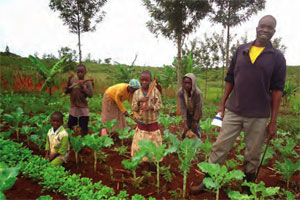The United Nations Collaborative Programme on Reducing Emissions from Deforestation and Forest Degradation (UN-REDD+) has suddenly become the beautiful bride of numerous state governments in Nigeria, where the initiative’s pilot implementation via an innovative, two-track approach consisting of actions by the Federal Government and Cross River State Government is ongoing.
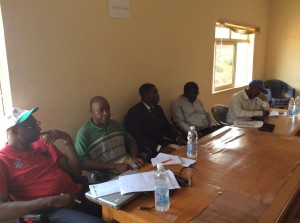
But others want a share of the action and no fewer than eight states of the federation are jostling to enlist onto the enterprise, which builds on the convening role and technical expertise of the Food and Agriculture Organisation of the United Nations (FAO), the United Nations Development Programme (UNDP) and the United Nations Environment Programme (UNEP). The Forest Department of the Federal Ministry of Environment is coordinating the Nigeria UN-REDD+ project.
A $4 million funding from the UN-REDD+ Programme obtained in 2011 has enabled Nigeria’s implementation of its REDD+ Readiness Project, which entails the preparation and implementation of REDD+ strategies with the active involvement of local stakeholders, including indigenous peoples and other forest-dependent communities.
Similarly, the Forest Carbon Partnership Facility (FCPF) of the World Bank at its 16th Policy Council meeting held in December 2013 in Geneva, Switzerland approved Nigeria’s REDD Readiness Preparation Proposal (R-PP) with a funding allocation of $3.6 million.
Consequently, the national UN-REDD+ office received a barrage of requests from states wishing to be part of the programme, and prompting a series of scoping missions by officials to interested areas as part of the strategy for conducting preliminary National Strategy for expanding REDD+ nationwide.
Apart from visiting on-going sustainable forest management projects, the scoping teams likewise met and discussed with ministry officials as well as communities and stakeholders.
In Akure, the Ondo State capital, Governor Olusegun Mimiko disclosed that the state has one of the most preserved forests in the country. Mimiko, who was represented by the Secretary to the State Government, Dr Aderotimi Adelola, said that the state had taken pains to follow the path of green development hence the planting of over five million trees in the last five years.
“We are committed as a state to become part of these global initiatives. We will not want to be left behind knowing that this programme has the potentials of changing the livelihood of our forest communities,” the governor added, saying that the state has 14 forest reserves. “We are prepared to fulfil all the indices required by the United Nations to be part of this laudable initiative.”
Tunde Atere, Commissioner for Natural Resources, described the UN-REDD+ initiative as a star programme that has the capacity to protect and conserve forests for future generations.
“We have demonstrated our interest to be part of the programme with an official letter to the Nigeria programme office. Our quest to become part of the UN-REDD Programme is based on our belief that it will change the way our forest is being handled. It will bring about income for the state and forest based communities,” Atere said.
Salihu Dahiru, Director of Forest Conservation, Federal Ministry of Environment, informed the state that the UN-REDD Programme was introduced as a result of the challenges of climate change.
Dahiru, who is National Coordinator for the Nigeria UN-REDD+ Programme, said that only Cross River State was benefiting from the programme while eight others have indicated their desire to come on board.
He said the scoping mission in Ondo was to enable the National UN-REDD office look at what is on ground in Ondo as well as to assess the level of its preparedness to join the programme. He said the indices set out by the United Nations that states were required to meet before being enlisted include the political will on the part of the state, the willingness of the state to join the programme and the involvement of forest-based communities in the management of forest reserves.
In Asaba, Delta State, Permanent Secretary of the Ministry of Environment and Forestry, Mrs. Felicia Adun, said, “Delta is a state that is very much interested in protecting its environment. It is a low-lying coastal state and it is vulnerable to climate change. We know that trees in the forest are very important for the sequestration of carbon, so we need to conserve the forest.”
Adun said the governor is very passionate in the issues of climate change and environmental conservation, saying there have been many projects in climate change mitigation and adaptation and projects in forest conservation.
She said there are already community-driven projects in forest conservation and that the state is prepared to take part in the REDD+ programme and “I know that we have a very good chance to be the next state in the REDD+ programme.”
According to her, there are natural forests in Delta state and that Ibusa and Uzere communities host these forests, adding that people in these communities really do want to conserve their forests and abhor unwanted exploitations of their forests and that on account of this there are still natural forests in Delta State.
She said the government has good working relationship with the communities through the Department of Conservation and Forestry. “We have forest officers that relate one-on-one with the communities.”
According to her, she prepared a REDD+ plan for Delta State that was presented to the team from Abuja by Dr Egwunatum Anselm, who is Assistant Director, Environmental Conservation.
Egwunatum, who led the team to the communities, said Governor Uduaghan created a “Delta State climate change team and it was from this that he established a REDD team.”
The governor, he said, then signed a MoU with the UNDP to reduce the impact of climate change in the various communities and that the government “released $1 million to show commitment to climate change activities in the state.”
A climate change policy was then developed in the state and a REDD+ Programme was incorporated in it. “There is a section devoted exclusively to REDD+. The policy is now being reviewed with the idea of turning it into a law.”
The state has some projects designed to assist communities adapt to the impact of climate change and, these projects are within the scope of REDD+. One of these projects is the EcoStove, which is now used in Otorogun community in Ughelli North Local Government Area (LGA) and it is being sought by other communities in the area.
After a presentation of the state’s REDD+ Readiness Plan by Mrs. Adun, the team visited forests in Uzere in Isoko local government area and Ibusa in Oshimili North LGA.
Leader of the REDD+ team to Delta, Moses Ama, who represented Dahiru, submitted: “We have come and seen and will go back to put our findings together. Our interactions with the communities have been fruitful. The body language that I saw was reflective of the fact that they are interested in the programme. Also, that there is smooth relationship between them and the government and the Ministry of Environment and Forestry.”
Ama, an Assistant Director, said he noticed that Delta State has a strong political will behind the programme, but that because of the terrain they were challenged and so could not have an in-depth scoping of the forest.
He said, “The scoping mission was fine. We saw and interacted and will put the report as best as we can. Also, there is an opportunity for them to come and defend their presentation and to also see what other states have so that no state feels marginalised. They will see who is better and who should come in first. They will also have an opportunity to see the pilot projects in Cross River and, if they don’t qualify then they will see the reason they didn’t qualify.”
In Ado-Ekiti, Governor Ayo Fayose of Ekiti State reiterated his commitment to environmental management and forestry initiatives, saying that, during his first tenure as governor, he initiated a massive state-wide tree planting programme aimed at greening the environment, restore degraded forests and mitigate the impact of climate change.
“The UN-REDD+ Programme has my entire support and I will do everything possible to ensure its success in Ekiti State,” he said, adding that the tree planting and forest regeneration schemes he earlier embarked upon would be revived, while existing natural forest resources protected with renewed vigour.”
Lead by Raymond Ebonine, an Assistant Director, the UN-REDD+ scoping team in Ekiti held meetings with state Forestry Department officials and visited the Ise Forest Reserve, Idege Farm Camp, as well as Temidire and Ekemode communities. Other members of the team included Richard Ikibe, Caroline Doka and Tijani Ahmed.
Faniyan Babasola (Director, Multilateral Relations and State UNDP Focal Person in Ekiti State) said: “Having you here today is like a mission accomplished. We had complained to the UNDP about our diminishing forestry stock.”
Olatilu Olubunmi Benson (Director, Non-timber Forest Products) said: “Ekiti has several free forest areas and 10 reserves. Exploitation has been going on from 1955 to date. Some reserves have been converted to artificial plantation, while some are completely degraded. What Ekiti needs now is the ‘+’ part of REDD to ensure the regeneration of our reserves.”
Felix Akunluyi (Director, Forestry) disclosed that a bill aimed at shifting emphasis from government intervention to community forestry is awaiting governor’s assent. He added that the idea is also to de-emphasise wood in favour of bamboo use as an alternative.
Adekunle Sunday, a Chief Forest Officer, noted that the state is also planning to establish a Forest Service Commission. He however insists that a strong political will is what the state needs to overcome its numerous forestry-related challenges.
Ebonine and Okibe expressed satisfaction with the governor’s words as well as the determination by government officials to be part of the UN-REDD+ initiative. They are however that a considerable amount of the state’s revenue is from logging and translating to large-scale exploitation of forest resources.
“They should consider sacrificing logging and seek alternative sources of revenue generation. With the right attitude and political will, it is possible.”
Other states that have indicated interest in the REDD+ programme include: Taraba, Nasarawa, Kaduna, Enugu and Lagos.


